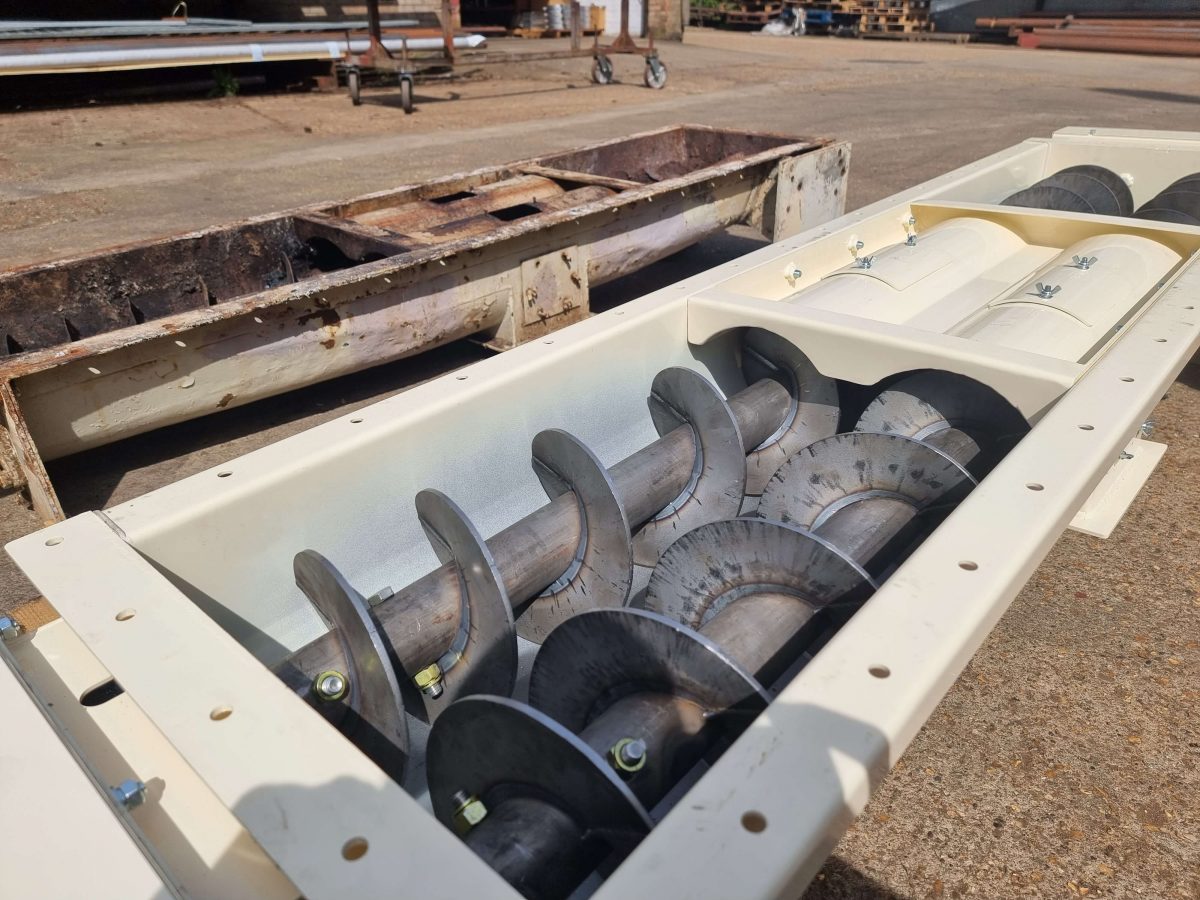We often hear of screw conveyors being used in the agricultural sector, in water processing and to move minerals and biological waste; however, they’re also becoming commonplace in the food industry too. U trough screw conveyors can provide a more hygienic and efficient alternative to conveyor belts, as their surfaces can reduce micro-bacterial growth. Conveyors used for these processes are often constructed to be easily detached, cleaned and inspected. To understand the role that hygienic screw conveyance can play in cheese production, we need to understand the complete process behind making it.
How is Cheddar Cheese Usually Made?
- Starter and rennet milk is put into a large vat, maintaining the temperature of the milk at around 85 Fahrenheit for half an hour. The milk then coagulates into a jelly-like mass which is cut into cubes.
- These cubes are called curds. The curds and the whey are heated and agitated with wire cutters to exclude the curd from the kernels at around 100 Fahrenheit.
- Part of the whey is drained off, and the remaining curd is cut into blocks. The blocks are manually turned in the vat and piled on top of each other at a temperature of 100 Fahrenheit.
- These are milled into smaller blocks and stirred to provide drainage for the whey. The drained blocks are salted and then pressed into forming hoops.
It’s widely recognised that there can be issues in this process that risk creating an unsanitary environment for both the food and the workers. For example, the salting process that requires workers to salt the milled curd at the bottom of the vat is unsanitary and haphazard due to the unevenness of distribution and the absorption of the curd. Other elements of the process are also performed manually, which means they rely on the skill and judgement of workers – this can easily result in workplace injuries and unhygienic conditions.
Screw conveyors can help automate this process and eliminate the growth of bacteria. For example, in the process of curd treating, conveyors can convey the shredded or milled curd beneath a spray of warm water and then to a spray of salt brine. This eliminates the risks discussed above with the salting process. Screw conveyors can also be used in the manufacturing of cheese for drainage. For example, in the warm water process mentioned above, excess free whey and butterfat traces are washed from the shredded curd. A screw conveyor is capable of draining this wash water at a drainpipe so butterfat can later be recovered from the drainage. Salted curd can also be transported to the next phase of operations, and brine can drain from the screw conveyor into the brine tank, where it’s then clarified through the appropriate filters.
Screw conveyors also provide this process with a distinct advantage, as they can salt and curds during the transport phase. Their cleaning process also boasts an array of hygiene benefits; when deep cleaning occurs next, the water remains in the housing. This eliminates the need to use traditional gaskets (mechanical seals to fill the space between two surfaces), which increase the chance of bacterial growth.
The benefits that a hygienic, automated screw conveyance operation can supply are widely documented. Products in the dairy sector must be prepared carefully with equipment that reduces bacterial load and can be sanitised easily to avoid contamination. Not only can screw conveyance provide this, but it also has other benefits for the dairy industry. These include:
More Productivity at Low Cost
Most automated methods, including screw conveyance, can perform tasks at a much quicker rate than manual alternatives. An increased load means more profit, which typically outweighs the initial costs of purchasing and maintaining the equipment.
Simple Product Transfer
With screw conveyors, dairy products are moved through the process quickly and efficiently. This is also done to avoid products coming into contact with external elements that could result in contamination. Although the process is entirely automated, it can offer users peace of mind as its reliability and efficiency are highly regarded in multiple industries.









